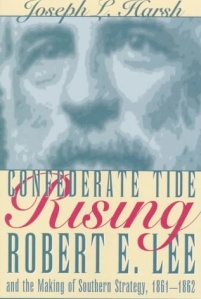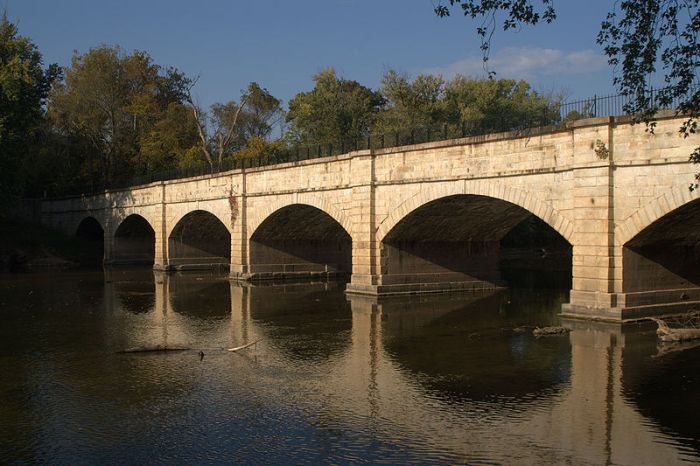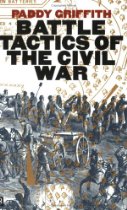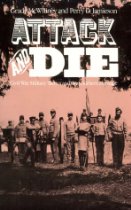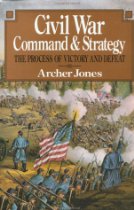Posts Tagged ‘Robert E. Lee’
Free Copy of Harsh’s Confederate Tide Rising
UPDATE ALERT: The book was snapped up within minutes of this post. Thanks to everyone who inquired.
—-
I recently ordered a “Like New” copy of Joseph L. Harsh’s Confederate Tide Rising: Robert E. Lee and the Making of Strategy, 1861 – 1862 to round out my set of his series. It came damaged in the post in part because the shipper packed it poorly (no padding). He has kindly offering to replace the book. I would be delighted to provide the damaged copy to anyone who would care to pay for the shipping. The pages of the book are in excellent shape and clearly new/unread. The damage is a scrape/bend to the cover and an associated rip of the book jacket. The dent slightly effects the first 10 pages of the book. Please contact me at renetyree at gmail.com. First-come-first-served.
The Monocacy Aqueduct
.
I’ve been reading this weekend about the Monocacy Aqueduct, a bridge which carried the Chesapeake & Ohio Canal over the confluence of the Monocacy River and Potomac River. It was constructed between 1829 and 1833 and was one of “eleven stone aqueducts designed to carry the canal across the major river tributaries that drain into the Potomac River along the canal’s route.” [1] It spans 516 feet, has seven arches, and was constructed primarily of stone quarried from nearby Sugarloaf Mountain. [2]
Because the canal was used to carry war materials and men, Lee twice ordered it destroyed. The first directive was to General D. H. Hill who conducted preliminary raids into Maryland in early September, 1862. Hill was also to “disrupt the B&O Railroad.” [3] According to the Smithsonian Associates in an article here, lock keeper Thomas Walter, convinced Hill to drain the aqueduct rather than destroy it. While sympathetic to the Southern cause, Walter did not want to see the structure destroyed. [4]
Hill’s men cut banks holding out the Potomac River and put large boulders in the canal but all damage was largely repaired within two months.
More on the Monocacy Aqueduct later.
Interesting fact: The locks built on the Chesapeake and Ohio Canal were based on hydraulic designs by Leonardo da Vinci.
Because of the importance of waterways through the Civil War, I’ve renamed and expanded “the rivers” page on WigWags to “the waterways” page.
[1] “The Monocacy Aqueduct: An Icon of American Civil Engineering,” The National Park Service, http://www.nps.gov/archive/choh/History/Structures/Monocacy.html, access online August 2, 2009.
[2] nps.gov, http://www.nps.gov/choh/photosmultimedia/index.htm?eid=118223&root_aId=109#e_118223, accessed online August 2, 2009.
[3] Joseph L. Harsh, Take at the Flood: Robert E. Lee & Confederate Strategy in the Maryland Campaign of 1862, (Kent, Ohio: The Kent State University Press, 1999), 71.
[4] “The Monoacy Aqueduct,” The Smithsonian Associates, CivilWarStudies.org http://civilwarstudies.org/articles/Vol_5/monocacy.shtm, accessed online August 2, 2009.
Up this week: Taken at the Flood
I’m thrilled to be finally reading Taken at the Flood: Robert E. Lee and the Confederate Strategy in the Maryland Campaign of 1862. Clearly I must obtain copies of the other books in this series.
Informal Leadership and Civil War Command
I’m reading the second half of Archer Jones’ Civil War Command and Strategy: The Process of Victory And Defeat this weekend. He makes an interesting point about the power of informal leadership over formal leadership positing that people find informal leaders just as they create informal organizations. He suggests that George McClellan provides one of the best examples.
As the creator and first commander of that Army [the Army of the Potomac], he had claims to loyalty which his charisma and the appeal of his Peninsula campaign’s strategy intensified. Even after he had left the command, his position of formal leadership, he continued to exercise great informal influence. This often took the form of the officers of the Army of the Potomac displaying hostility to the secretary of war and an unshakable allegiance to the strategy of the Peninsula campaign. No successor in command could ever displace him as the army’s informal leader, a situation which made it difficult for every subsequent commander and limited the ability of the president ad the general in chief to enjoy any widespread, deep-rooted support.
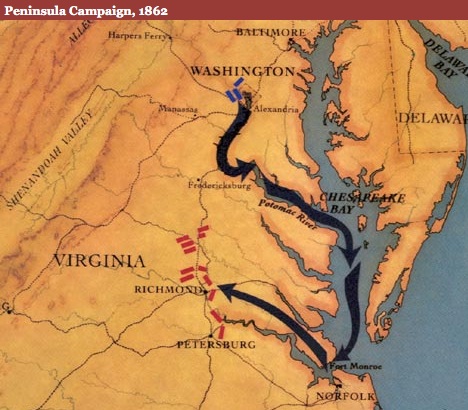
Source: PBS: http://www.pbs.org/civilwar/war/map3.html#
 In like fashion, he suggests that Lee uprooted Johnston’s memory because of the three campaigns he conducted in four months and put Lee in the position of informal and formal leader of the Army of Northern Virginia.
In like fashion, he suggests that Lee uprooted Johnston’s memory because of the three campaigns he conducted in four months and put Lee in the position of informal and formal leader of the Army of Northern Virginia.
Do you agree with his assessment?
 Archer Jones, Civil War Command and Strategy: The Process of Victory And Defeat, (New York: The Free Press, 1992), 126.
Archer Jones, Civil War Command and Strategy: The Process of Victory And Defeat, (New York: The Free Press, 1992), 126.
Free or Inexpensive American Civil War Titles for Kindle

I’ve spent some time at the Kindle Store perusing their books for deals on American Civil War Books. I’ll follow up with additional lists on Military History and History in general although they are numerous. One plus – many of the Army Field manuals are available for $0.99, You could, of course, download most of the latter from other sites and load to you Kindle as well.
Of note, David Woodbury over at of Battlefields and Bibliophiles has posted an outstanding piece on the digitalization of books phenomena which you can read here.
Here’s my list so far of ACW books that are free or under $2.00 in the Kindle Store. Bear in mind that most of these are in the public domain so you can also load them to your Kindle 2 for free in the manners I described in previous posts.
General Histories
History of the Civil War, 1861 – 1865 by James Ford Rhodes $0.99
Memoirs and Biographies
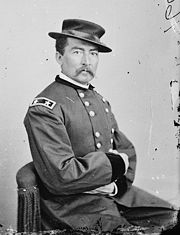
Sheridan
Personal Memoirs of P. H. Sheridan, General, United States Army Volume 1 by Philip Henry, General, 1831-1888 Sheridan – $0.00
Personal Memoirs of P. H. Sheridan, General, United States Army Volume 2 by Philip Henry, General, 1831-1888 Sheridan – $0.00
Personal Memoirs of P.H. Sheridan, both volumes in one file by Philip Henry Sheridan – $0.99
Personal Memoirs of U. S. Grant Volume 1 by Ulysses S. (Ulysses Simpson), 1822-1885 Grant – $0.00
Personal Memoirs of U. S. Grant Volume 2 by Ulysses S. (Ulysses Simpson), 1822-1885 Grant – $0.00
Personal Memoirs of Ulysses S. Grant by Ulysses S. Grant and Mark Twain- $0.99
Letters of Ulysses S. Grant to His Father and His Youngest Sister, 1857-1878 by Ulysses S. Grant and Jesse Grant Cramer – $0.99
Campaigning with Grant (1907, [c1897]), First Person Account of Ulysses S. Grant During the Civil War by Horace Porter – $1.59

Stonewall Jackson
Stonewall Jackson and the American Civil War, both volumes in a single file by Colonel G.F.R. Henderson – $0.99
Stonewall Jackson and the American Civil War by G. F. R. Henderson – $0.99
Stonewall Jackson and the American Civil War by G.F.R. Henderson and Viscount Wolseley – $0.99

Lee
The Life of General Robert E. Lee by Captain Robert E. Lee (his son) – $0.99
A Life of General Robert E. Lee by John Esten Cooke – $0.99
Recollections and Letters of General Robert E. Lee by his son by Captain Robert E. Lee – $0.99
With Lee in Virginia, a Story of the American Civil War by G.A. Henty – $0.99

W. T. Sherman
Memoirs of General William T. Sherman by William T. Sherman – $0.99
Thirteen Months in the Rebel Army by William G. Stevenson – $0.99
Captains of the Civil War – A Chronicle of the Blue and the Gray by William Wood – $0.99
Military Reminiscences of the Civil War, both volumes in a single file by Jacob Dolson Cox – $0.99
Military Reminiscences of the Civil War, Volume 1 by Jacob Dolson Cox – $1.84
Military Reminiscences of the Civil War, Volume 2 by Jacob Dolson Cox – $1.84
Reminiscences of Two Years with the Colored Troops by Joshua M. Addeman – $0.99
Army Life in a Black Regiment by Thomas Wentworth Higginson – $1.00
Heroes of the Great Conflict: Life and Services of William Farrar Smith, Major General, United States Volunteer in the Civil War by James Harrison Wilson – $0.99
The Scouts of Stonewall: The Story of the Great Valley Campaign by Joseph A. (Joseph Alexander), 1862-1919 Altsheler
The Rise and Fall of the Confederate Government by Jefferson Davis
Regimental Histories
History of Company E of the Sixth Minnesota Regiment by Alfred J. Hill – $1.59
Women
Woman’s Work in the Civil War; A Record of Heroism, Patriotism, and Patience by M.D. L. P. Brockett – $1.80
Memories: a Record of Personal Experience and Adventure During Four Years of War by Mrs. Fannie A. Beers – $0.99
Fortifications and Armaments
A History of Lumsden’s Battery, C.S.A. by Dr. George Little and james R. Maxwell – $1.99
History of the Confederate Powder Works by George W. Rains- $1.19
Naval
![the-fight-between-the-alabama-and-the-kearsarge-nh59354 "The Fight Between the Alabama and the Kearsarge" [NH59354]](https://wigwags.files.wordpress.com/2008/09/the-fight-between-the-alabama-and-the-kearsarge-nh59354.jpg?w=700)
The Story of the Kearsarge and the Alabama by A. K. Browne – $0.99
The Cruise of the Alabama and the Sumter, both volumes in a single file by Raphael Semmes- $0.99
Railroads
The Great Railroad Adventure – a True Tale from the American Civil War by Lieut. William Pittenger – $0.99
Prisons
Andersonville: a Story of Rebel Military Prisons, all four volumes in a single file by John McElroy – $0.99
Other Biography

John Wilkes Booth
The Life, Crime & Capture of John Wilkes Booth by George Alfred Townsend – $0.99
Speeches and Legislative Documents
Abraham Lincoln’s Second Inaugural Address by Abraham Lincoln – $0.49
Lincoln’s Gettysburg Address by Abraham Lincoln – $0.49
The Emancipation Proclamation (Preliminary and Final Version) by Abraham Lincoln and William Seward – $0.80
Jefferson Davis’ Inaugural Address by Jefferson Davis – $0.99
Civil War Photography
Taking Photographs During the Civil War – $0.80
Fiction
The Little Regiment and Other Episodes of the American Civil War by Stephen Crane. Published by MobileReference (mobi) by Stephen Crane – $0.99
The Red Badge of Courage by Stephen Crane – $0.99
Next Course – Civil War Strategy and Tactics
I just registered for my next course, Civil War Strategy and Tactics, which will start March 2nd. Book list looks terrific and is on order. It’s also loaded on my virtual bookshelves which you can access by clicking on any of the books. I’ve updated “the courses” page here.
Course Description: This course is a study of the American Civil War with emphasis on operational contributions of Union and Confederate military leadership. Students examine Civil War battles on two levels: the strategic doctrine as formed by the major commanders and tactical developments that affected the conduct of battle at a lower echelon of command. Special emphasis is on the interplay between these levels in order to gain a comprehensive view of strategy and tactics in both armies from 1861-1865.
Lee’s Failure to Entrench
“Lee took longer to learn from his experience that the frontal assault contributed only to attrition without victory than any other field commander in the Civil War.”[i]

Edward Hagerman covers in detail the practices of the Federal and Confederate armies as it relates to entrenchment. McClellan and his successors employed it masterfully. Lee and his generals came to the practice slowly. Hagerman suggests that the reason may have been that, unlike McClellan, Lee lacked a peer group from the Corps of Engineers in the Army of Northern Virginia. [ii] Lee also graduated from West Point before Dennis Mahan (see post here) arrived to instruct cadets on the benefits and “how to” of entrenchment.
An example, despite having the time and equipment to entrench at Antietam (see photo below), Lee did not. According to Hagerman, “his failure to do so suggests that he may have identified with an extreme tendency in American tactical thought opposing all fortifications on the open field of battle, on the grounds that they made green volunteer troops overcautious and destroyed discipline and the will to fight.” [iii]
Burnside Bridge (below) taken from the Confederate viewpoint on the
west side of Antietam Creek looking east.

Likewise at the Battle of Fredericksburg, where Lee assumed “a tactical defense where doctrine called for fortification of his front,” Lee again failed to entrench. “He had his troops construct only a few minor earthworks at scattered positions. This despite Antietam and despite the fact that the rifled musket, with its greatly increased range and accuracy, was now in general use in the eastern theater.” [iv]
Longstreet (above) finally broke the tactical pattern, not Lee.
“Although he occupied one of the strongest natural positions in the Confederate line, Longstreet ordered ditches, stone walls, and railroad cuts occupied and strengthened with rifle tranches and abatis. The Federal assaults against his positions on Marye’s Heights never got within a hundred yards of the stone wall. Behind the wall were four lines of infantry armed with rifled muskets, supported by sharpshooters in rifle trench, and entrenched artillery that directly covered and enfiladed the wall from the two terraces that rose behind it. Their fire cost the Union troops 3,500 dead to their own loses of 800 men.” [v]
Watching the battle with Longstreet, Lee (finally) ordered fatigue parties to entrench the heights as soon as the fighting stopped. [vi]
————
[i, ii] Edward Hagerman, The American Civil War and the Origins of Modern Warfare: Ideas, Organization, and Field Command (Bloomington: Indiana University Press, 1988), 123.
[iii] Ibid., 116.
[iv, v, vi] Ibid., 122
Hardee’s Tactics
I mentioned in the last post that I had begun reading Douglas Southall Freeman’s R.E. Lee: A Biography. In the “Foreward,” Freeman mentions that in his references to military terminology, he has applied “Hardee’s Tactics” which was used by both armies. Fortunately, I found a copy on the web. I discovered – you all may have found it long ago – the fantastic U.S. Regulars Archives which has digitized copies of a variety of tactics documents. I’ve filled under military history.
What I’m Reading Over Break
I wrapped up the course The Civil War: Seminal Event in American History on Friday. It was an excellent course. There were more non-military history students in the class than I usually see but that’s because it provided both a broad and – where appropriate – deep view of the antebellum America, the war, and its key players and events.  While I only have a week before the next course starts, I’ve started reading the first of the four volume work by Douglas Southall Freeman (pictured right), R. E. Lee: A Biography. As I mentioned in a comment earlier, I was fortunate to win
While I only have a week before the next course starts, I’ve started reading the first of the four volume work by Douglas Southall Freeman (pictured right), R. E. Lee: A Biography. As I mentioned in a comment earlier, I was fortunate to win  a hard fought eBay auction for the four volume Pulitzer Prize Edition published in 1949 by Charles Scribner’s Sons. It’s old and yellowed and smells like old books do after sitting on a shelf for years but it is otherwise in excellent shape. The original work was copyrighted in 1934 and Freeman won the Pulitzer Prize for it in 1935 under the category of Biography or Autobiography. He would go on to win another for his biography of George Washington (he wrote six of the seven volumes) in 1958. Freeman started his research and writing of the Lee biography in 1915. The math reveals that it took him 20 years to complete. Freeman indicates in his foreward that a great deal of primary source material had not been reviewed prior to his effort and his study of those resources led to four volumes instead of the planned one. Amazingly, the entire 4 volume set was hand typed into html and is available online here.
a hard fought eBay auction for the four volume Pulitzer Prize Edition published in 1949 by Charles Scribner’s Sons. It’s old and yellowed and smells like old books do after sitting on a shelf for years but it is otherwise in excellent shape. The original work was copyrighted in 1934 and Freeman won the Pulitzer Prize for it in 1935 under the category of Biography or Autobiography. He would go on to win another for his biography of George Washington (he wrote six of the seven volumes) in 1958. Freeman started his research and writing of the Lee biography in 1915. The math reveals that it took him 20 years to complete. Freeman indicates in his foreward that a great deal of primary source material had not been reviewed prior to his effort and his study of those resources led to four volumes instead of the planned one. Amazingly, the entire 4 volume set was hand typed into html and is available online here.
Straight talk on soldiers and presidents
I’m reading The Cause Lost: Myths and Realities of the Confederacy by William C. Davis. The approach Davis has taken is to profile the primary players in the conflict – foibles and all. W. C. presents a fascinating portrait of Jefferson Davis which borders on being psychoanalytic. It helps to explain why Davis and his generals had such poor relationships, the exception being Lee who was a master at determining how to handle the man and won his loyalty and friendship. Three of Lee’s practices stood out. First, he kept Davis informed on a daily basis – unlike Beauregard and Johnston. Second, he asked Davis for his opinion, which stroked his ego. Third, he stayed away from the press and didn’t criticize Davis behind his back. Lee’s peers struggled with either their own self-importance or lack of ability and found outlet by back-biting in the press.
All in all a very good read largely because Mr. Davis pulls no punches. Also worth the read because of the details provided; case in point, the sinking of the “Stone Fleet” at the mouth of the harbor leading into Charleston. This strategy by the Federals to block traffic in and out of the harbor failed miserably due to the soft mud bottom into which the fleet – whose holds were filled with granite – sank.
Copyright © 2007 Rene Tyree
